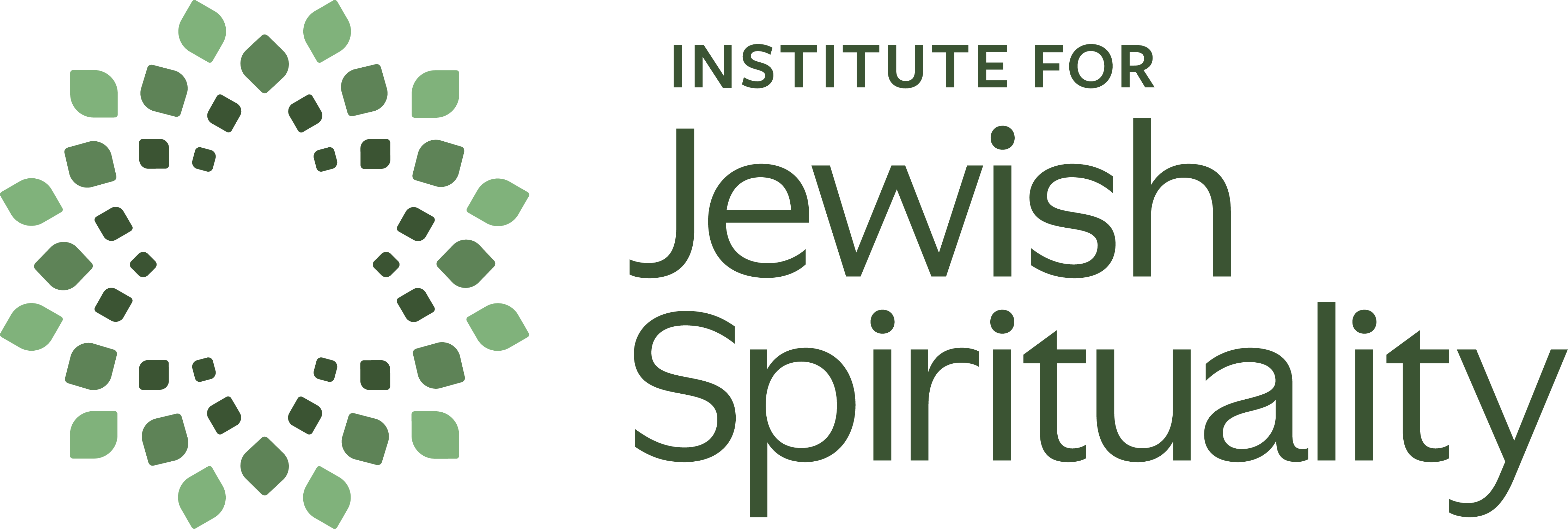Each time we take the Torah out of the ark in synagogue, chanting its verses in community, we are reenacting revelation at Mount Sinai. Though not nearly as dramatic as the Torah’s description of fire and smoke, thunder and lightning, a quaking mountain and a shofar blast growing louder and louder, our rituals of standing up on our feet as the ark is opened, witnessing as the scrolls are revealed, and bringing the Torah from the “mountain” of the raised bimah into the midst of all those gathered, enable us to evoke Sinai in the present moment.
On Shavuot (the festival celebrating the giving of the Torah, which begins this year in the evening of June 11th), we seek to inhabit the experience of Sinai even more fully as the very scene of revelation is read from the Torah, surrounding us with the images of flashing fire and the voice of God rumbling through the chanted Ten Commandments. On Shavuot, we seek to be present not only as witnesses to the powerful experience of the giving of the Torah, but to join our ancient Israelite kin in actively receiving Torah and opening ourselves to receive Divine Presence.
But in the biblical description of Matan Torah (the giving of the Torah) there is a disruption in the Israelites’ receptivity. Although they collectively call out “All that YHVH has spoken we shall do!”, actively taking hold of the commitment to live their lives in alignment with Divine will and sacred practice, at the very moment of direct Divine encounter, the Israelites sever connection. They become so gripped by fear, afraid that they will die if they remain present to the unfolding revelation, that they ‘stand at a distance.’ They plead with Moses to interrupt this intimate intensity and ask him to be their flesh and blood, familiar, human-scale intermediary.
I feel the loss that this reaction created. In the face of such potent, available closeness, the Israelites created distance. With Shavuot’s invitation to embody revelation, an approach of mindful spiritual practice invites us to both inhabit the deepest wisdom of our ancestors’ experience, as well as learning from and bringing tikkun/repair to our ancestors’ limitations. We can turn our attention to explore the question for ourselves – when does fear cause you to distance yourself from that which is intimate, sacred, powerful and true?
Revelation in its varied forms can be unsettling and stir fear. As Rabbi Gordon Tucker writes the embodiment of revelation “should cause us to tremble.” It “should penetrate one’s entire person, one’s entire body.” Whether in the close, revealing presence of another person, in a breathless, awe-opening moment in nature, in an unmasking and emptying experience of solitude or in prayerful surrender, the ego-gripped self can’t help but loosen. In such experiences, we get a glimpse of Divine reality – more vast and far more intimate in its awareness than the small self that we know, tethered to the comfort, stability and safety of its self-enclosure. It can be frightening to release the protective grasp on our sense of self. It can be frightening to feel all that this demands of us – holding us in the commitment to show up again and again – enlivened, open and connected – not retreating back into a contracted way of being, not going back to sleep.
In the liturgy of the Torah service, there is guidance to practice meeting the fears that revelation’s intimacy stirs. And while these words are part of every Torah service, I want to engage with them as a practice particularly for Shavuot:
Just before Torah reading begins, as the first person is called up to the Torah for an aliyah, the gabbai recites, “May Divine Presence help, protect and save all who trust in You…” And the community responds – “Ve’atem ha’dvekim b’YHVH Eloheykhem chayyim kulkhem hayom/You who cling to YHVH your God, are all alive today.”
First we are invited to consciously root ourselves in the qualities of Divine protection and support, present in our bodies, souls and breath, present in community, present in the ancestral strength and love that reverberate through us and through prayer, ritual and Torah. When we take these few words as instructions, we practice leaning into trust and the power that saves us and holds us. Then the community responds together by consciously, deliberately, drawing close. In our voices and our presence with one another, we mirror to each other that which is true – “You who are dvekim” – you who keep moving closer, who attach yourselves to Limitless Presence, who cling to intimate connection even when you are afraid – you are alive today! As we stand together at the foot of Sinai, ready to receive living, breathing, ever-unfolding revelation, we have the opportunity to repair the distance that fear can engender. We practice becoming dvekim, those who choose to consciously, lovingly, bravely draw close.
Chag same’ach!
